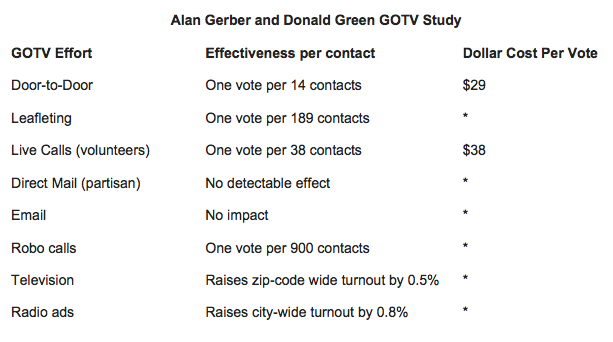It’s not enough to hope to be the best. You need to craft an effective digital plan for your campaign that will nurture relationships, empower your supporters, amplify your offline message, and ultimately, win votes.
Examining Inbound’s innovative digital marketing strategies through a political technology lens, I came away with seven practical tips that the savvy political campaign can begin to implement today:
1. Be on the way, not in the way. We’re in an attention economy. Your campaign shouldn’t be like the pop-up ad that blocks users from the content they wish they were experiencing, but rather the purveyor of the information they want. Don’t interrupt, interact. As Seth Godin puts it, “Be worth connecting with.” Don’t coerce, connect. Do so by creating content so meaningful, your audience can’t help but share it
2. Target, target, target. Just like you target voters in your district, know who you want to reach and make steps to do that. How do your voters spend their time online and where? Your voters are online all day, every day. As Pew recently found, the majority of Americans own smartphones. Of those smartphone users, 72 percent say they are within five feet of their smartphones the majority of the time.
3. Get up close & personal. Meaningful relationships resonate online as well as off. Create a hyper-relevant sense of community among your audience by showing how well you know and identify with them. Strategist Ben Grossman stated, “Social media is where your brand lives as a verb.” As a candidate, your site and micro-sites are key places to actively show voters that you deliver on the promises you’re making. Allow your personality and vision to show through each post, (high quality!) picture, infographic, tweet.
4. Get LinkedIn. One out of every three professionals on the planet is LinkedIn, according to @WillHambly, online marketing manager for LinkedIn. As you form relationships with those in your community and establish yourself as a thought leader, don’t leave out LinkedIn. These are business decision makers who invest their time on this professional network to gain insight on their careers and current affairs. In fact, there is six times more engagement with content on LinkedIn than with jobs. Connect with community members and share valuable content, linking back to your other sites and social networks.
5. Always include a clear call to action. Whether it’s a post on Facebook with a link or a speech at the local rotary club, ask your audience to do something with the information you just gave them.
6. Ask questions. Don’t think of your online presence as a platform but rather an opportunity to join the conversation. Give your voters a voice. Engage. Show that you value your audience’s input by initiating with questions and then responding to comments and other content.
7. Use data to measure and improve. Keep a close eye on analytics. Track your efforts through Google Analytics, built-in alalytics (like Facebook Insights) or third-party programs. Data analyst Nate Silver emphasized that paying attention to stats empowers your relationships and actions: “Statistics is the science of finding relationships and actionable insights from data.” He incisively ended his keynote with the quote: “The road to wisdom? Well, it’s plain and simple to express. Err, and err again, but less and less.”


 Now the study notes that the * means “Cost effectiveness is not calculated for tactics that are not proven to raise turnout” and that “door-to-door canvassing is talking to targeted voter, for phone calls, talking to targeted voter.” So robo calls, emails, and direct mail have no real impact for GOTV, and it should be noted that television and radio raise turnout by less than a point. That is not even targeted GOTV. It just raises turnout generally, not necessarily among a campaign’s targeted voters.
Now the study notes that the * means “Cost effectiveness is not calculated for tactics that are not proven to raise turnout” and that “door-to-door canvassing is talking to targeted voter, for phone calls, talking to targeted voter.” So robo calls, emails, and direct mail have no real impact for GOTV, and it should be noted that television and radio raise turnout by less than a point. That is not even targeted GOTV. It just raises turnout generally, not necessarily among a campaign’s targeted voters.